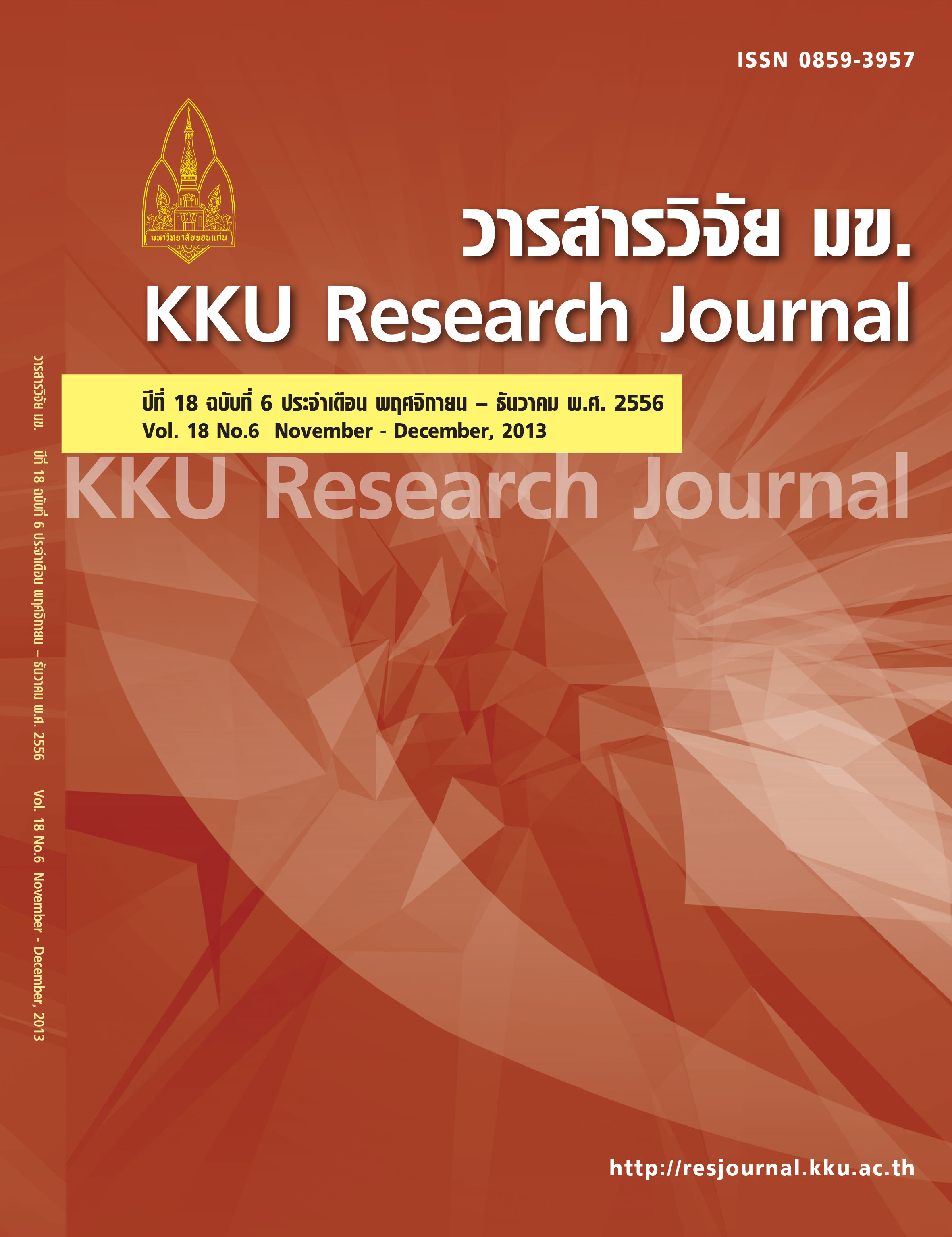Short paper: risk assessment of bisphenol a migration from baby feeding bottles
Main Article Content
Abstract
Bisphenol A (BPA)-containing baby feeding bottles have been banned from use in many countries, but not in Thailand. This study was aimed to assess the risk of exposure to BPA migrated from baby feeding bottles sold in Thailand for the worst case scenario. Six brands of baby feeding bottles, 2-4 bottles per brand were randomly collected. Distilled water 30 ml at room temperature, 40?C, 70?C, 100?C was shaken 30 times in each feeding bottle capped with its rubber nipple, lyophylised, re-dissolved with 1 ml of HPLC mobile phase, and analysed with HPLC-UV. The analysis found that five brands of baby feeding bottles presented BPA at undetectable or negligible levels. There was only one brand, without Thailand Industrial Standard (TIS) code for rubber nipples presented on the bottles, releasing BPA at 6.6?0.3 and 11.3 ? 1.5 mg per 30 ml at 40?C and 70?C dissolving water, respectively. Although more BPA migration was found in higher temperature water in the first tests, the migration was lower in the following tests, until lower than LOQ after 4 consecutive tests. There seemed to be a limit of BPA migration from each bottle. Estimation for daily exposure dose (DED) of BPA migration for the worst case was 55.3-72.4 mg/kg-day. Comparing to 50 mg/kg-day, a Tolerable Daily Intake (TDI or a safe dose) for BPA dietary exposure, the margin of safety or MOS (=TDI/DED) was found between 0.69-0.90, the reference or safe dose (TDI) lower than the exposure dose (DED). This meant that babies fed by TIS-unapproved products were at risk of BPA exposure, particularly in the first time use and using high temperature dissolving water. Although BPA-containing bottles are not officially banned from use in Thailand, there may be only a few products left in the markets containing BPA at risk level. Therefore, parents are suggested to use only feeding bottles presenting TIS code to avoid BPA exposure for babies and Thai authorities should do more stringent inspections.
Article Details
How to Cite
Chatsantiprapa, K., Srihan, S., Navakoksri, R., & Kunthaprom, N. (2017). Short paper: risk assessment of bisphenol a migration from baby feeding bottles. Asia-Pacific Journal of Science and Technology, 18(6), 1021–1025. retrieved from https://so01.tci-thaijo.org/index.php/APST/article/view/83032
Section
Research Articles


